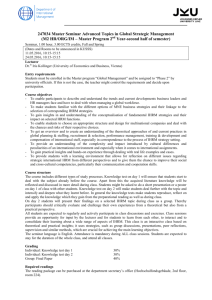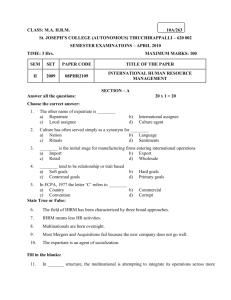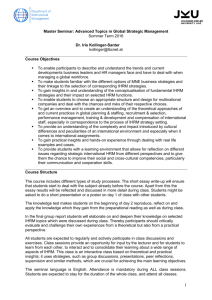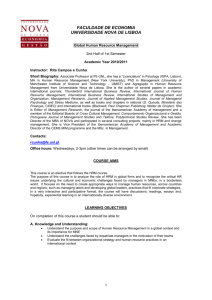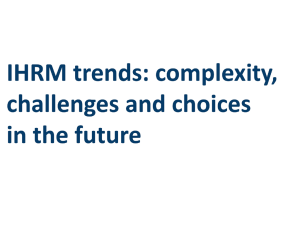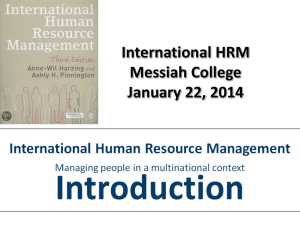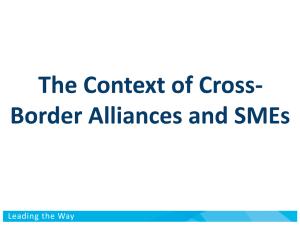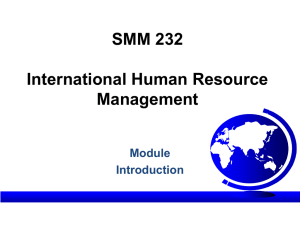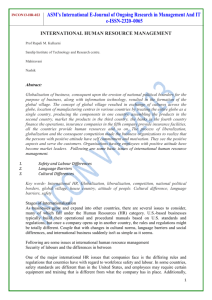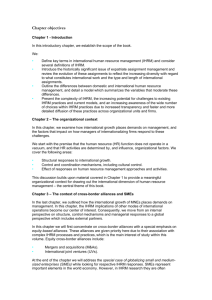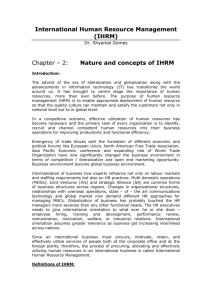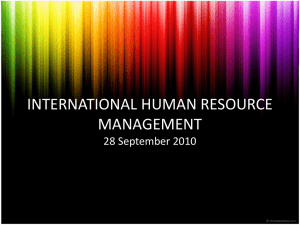Chapter1
advertisement
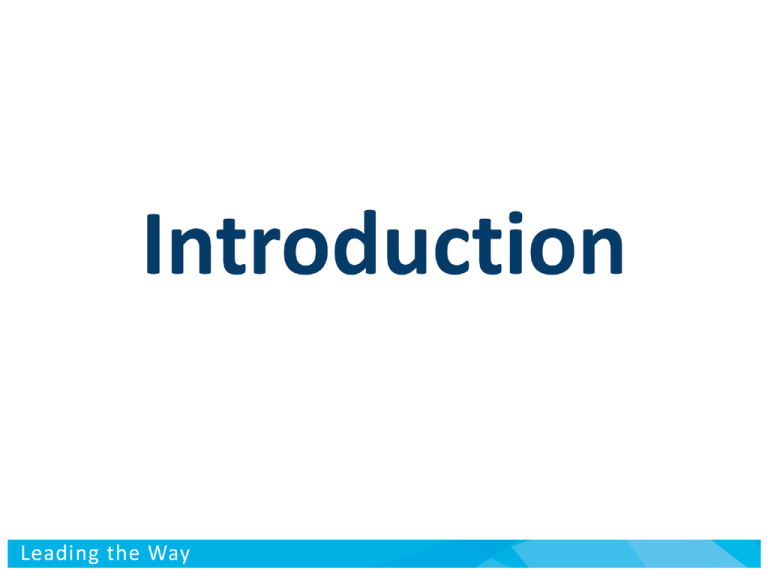
International Human Resource Management Managing people in a multinational context Chapter Objectives • Define key IHRM terms • Review expatriate* management evolution • Outline differences between domestic and international HRM • Discover the increasing complexity and potential challenges of current IHRM * = Give up residence in one’s homeland and take residence in another country. IHRM Chapter 1 2 Figure 1-1 Inter-relationships between approaches to a field IHRM = International Human Resource Management HR = Human Resources IR = Industrial Relations (Employment Relations) IHRM Chapter 1 3 Defining HRM An organization’s HRM activities include: 1. Human resource planning 2. Staffing (recruitment, selection, placement) 3. Performance management 4. Training and development 5. Compensation (remuneration) and benefits 6. Industrial relations IHRM Chapter 1 4 Figure 1-2 Inter-relationships between approaches to the field IHRM Chapter 1 5 Figure 1-3 International assignments create expatriates IHRM Chapter 1 6 Differences between domestic HRM and IHRM IHRM complexity can be attributed to six factors: 1. Human resource planning 2. Staffing (recruitment, selection, placement) 3. Performance management 4. Training and development 5. Compensation (remuneration) and benefits 6. Industrial relations IHRM Chapter 1 7 Figure 1-4 Variables that moderate differences between domestic and international HRM IHRM Chapter 1 8 Steps to truly international HRM 1. Recognize that one’s own HRM reflects home culture assumptions and values. 2. Recognize that one’s own peculiar ways are neither universally better nor worse than others - just different and likely to exhibit strengths and weaknesses, particularly abroad. 3. Recognize that organization’s foreign subsidiaries may prefer other ways to manage people – ways that are neither intrinsically better nor worse, but possibly more effective locally. 4. Headquarters willingness to acknowledge cultural differences and steps to make them discussable and therefore usable. 5. Build shared genuine belief that cross-cultural learning will result in more creative and effective ways of managing people. IHRM Chapter 1 9 Figure 1-5 Strategic HRM in multinational enterprises IHRM Chapter 1 10
